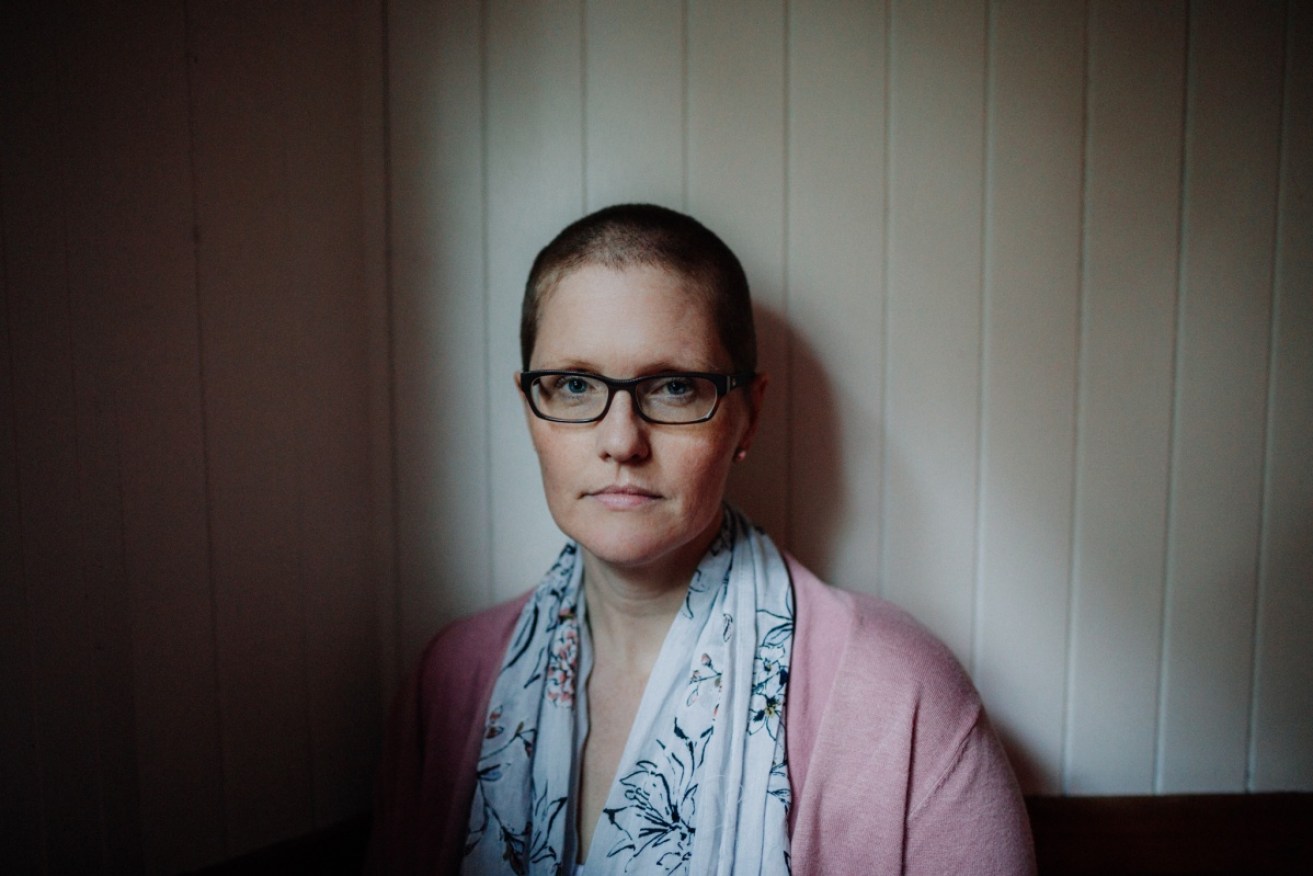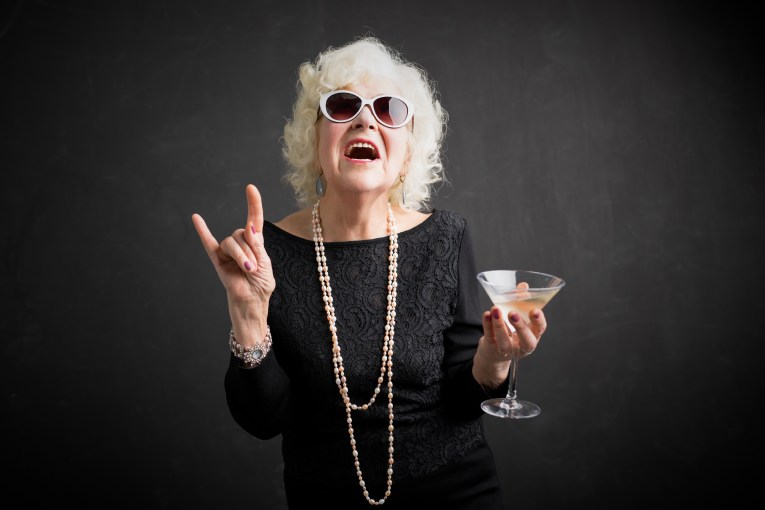From baby plans to a cancer diagnosis: How Jodie’s world was turned upside down


Brisbane woman Jodie Lydeker was 40 years old when a GP visit for fertility options uncovered cancer. Photo: Marina Locke Photography
At age 40, Jodie Lydeker was eager to start a family so made an appointment with her GP to talk about fertility options. Little did she realise that this would be the very moment to set her on a tortuous path that would change her life forever.
Like many women, Jodie had noticed a change in one of her breasts, but didn’t want to jump to any conclusions, so ignored the symptom for a few weeks. She considered herself too young: around three in four breast cancers occur in women 50 years and over.
It was not until she saw her doctor – an appointment booked earlier to discuss her baby plans – that she would raise her breast concerns.
“I told my doctor that I noticed some indentation on the outer side of my left breast,” the Brisbane-based project manager said.
She later found out that this “indentation”, or dimpling, was one of the signs of breast cancer. Jodie considered herself breast-aware (her mother was diagnosed with the cancer only 12 months prior). But, she was shocked to hear about the unusual symptom.
“I knew about nipple discharge and lumps, but never heard of dimpling.
“I noticed the strange dimpling when I raised my arm. When I put my arm down it was gone.”

Jodie thought she had more time to start a family before her cancer diagnosis. Photo: Marina Locke Photography
Within two days of the initial GP appointment, Jodie was told she’d have to undergo surgery to remove a five-centimetre tumour, followed by months of chemotherapy and radiation treatment. She was immediately referred to a fertility specialist.
“The irony was that the same conversation about my fertility options, became ‘you’ll be infertile’. It was a bitter pill to swallow,” Jodie said.
You suddenly realise ‘wow you know what, I may not be able to be a mother’, and I have to be ok with that.
‘A tsunami of appointments’
After two surgeries to remove the tumour and surrounding cancerous cells, Jodie was given a three-week window to inject fertility drugs before starting chemo – a treatment that would potentially cause egg damage and lead to infertility.
“The oncologist at Icon Cancer Centre [where I received chemo] was very clear that she didn’t want to push it past a certain date to start chemotherapy,” she said.
Her fertility specialist gave Jodie two options: defer chemo for six to 12 months and try IVF, or receive hormone treatment to produce and freeze an egg. She chose the latter.

Jodie and her partner Eric were making baby plans when a cancer diagnosis changed everything.
She received two jabs of hormones every day, and had a blood test every other day to check her progress.
“It was a very small window, to know if my body was going to produce an egg and harvest it prior to starting chemotherapy,” she said.
Jodie describes this period in her life as a “tsunami of appointments and forms”.
“It feels like you’re drowning. If I stopped to think about it for too long I would have drowned in all of that.
“I wanted to know what happens five chapters into the story … The only way for me to get through that was to be really task-focused,” Jodie, who has worked as a public service executive for 10 years, said.
Ironically, the treatment she feared most – “everyone’s got a horrible chemo story”, she said – turned out to be the very thing that turned chaos into calm.
“I had to get off the hamster wheel. Chemo ultimately slows things down because your body is dealing with the medication … all the chaos had stopped,” she said.
How 1000 paper cranes provided hope
During treatment, Jodie and her friend Marina noticed the Icon nurses had started a colourful wall of folded paper cranes.

Childhood friend Marina trying on “silly blonde wigs” after Jodie lost her hair.
In Japanese folklore, paper cranes are regarded as mythical creatures and thought to live for a thousand years. Legend has it that if a sick person folds one thousand paper cranes, the gods will heal them.
Today, the origami crane has turned into an international symbol of peace, after 12-year-old atomic bomb survivor Sadako Sasaki spent her final days folding paper cranes in the hope she would recover from the leukaemia caused by radiation exposure.

Bunches of origami cranes hang in a window of the Nagasaki Atomic Bomb Museum. Photo: Getty
Sadako passed before getting to 1000 completed cranes. But, her story encouraged classmates and people all over the world to send cranes of their own to her grave as a sign of solidarity and love.
Inspired by this story, staff at Icon Cancer Centre Wesley provided families and friends with individual origami packs with instructions along with the story and paper for each patient.

The paper cranes are now a global symbol of hope following the atomic bombs in Hiroshima and Nagasaki. Photo: Getty
Jodie and Marina, a professional photographer, heard that the nurses were 200 paper cranes shy of reaching their goal.
Marina took to social media for some help. She told her children about it and they began “folding cranes for Aunty Jodie”. Soon friends, near and far, were folding cranes and sending them to be part of the display of hope at Icon.
Marina’s friend who works in the US had lost someone to cancer and started to get involved after hearing about the initiative. She would go on to send across a flock of origami cranes – 100 paper cranes, to be precise, that she had folded on Post-It notes during work meetings.
For Jodie, who underwent five months of chemo and is now half way through daily radiation therapy, the 1000-cranes initiative has opened her up to a support network that she didn’t know existed.

A US woman heard about the cause and made the final 100 paper cranes on Post-It Notes while at work.
“I walk past the 1000 cranes [tree] and know that there could be 1000 hands behind it. There’s a lot of love, but on the flipside there’s pain and hurt behind each crane as well,” the now 41-year-old said.

The finished product proudly displayed at Icon Cancer Centre Wesley (Brisbane).
And the silver lining? Prior to starting chemotherapy, Jodie’s fertility specialist successfully froze one egg meaning she still has a chance of starting a family after recovery.
“I had a lot of choices taken away very quickly … but this has given me the gift of hope.”
Follow Jodie’s story on her blog We Are She.








